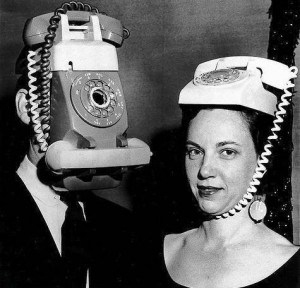What type of impression are your cold emails leaving on your prospects?
If your emails have high open rates but aren’t getting any responses, you probably need to work on your calls to action.
Far too often people obsess about their email introduction and benefits/features, and neglect their calls to action (CTA). However, your CTA is the last impression your prospects have of you and your product/service, so it needs to be crystal clear and incredibly persuasive. If you don’t give your prospect clear instructions as to the next step you want to take, and neglect to incentivize them to respond, you’re wasting your time doing cold email. Be clear about the next step you want your prospects to take, so you don’t leave them confused or uninterested.
Instead of leaving your prospects bored and confused wondering why you emailed them, use these calls to action to help strengthen your pitch and push your prospects to respond.
1. Hold your prospects’ attention by keeping your calls to action short and simple
“When do you have time for a short call so I can learn a bit more about {!Company}’s sales processes and share my sales productivity idea with you?”
Your prospects are busy people. They probably only have a few minutes to skim through your cold email before they decide whether or not to hit the delete button. If your closing line is too long winded or unclear, you’ll turn them off.
To keep your prospects engaged, your CTAs need to be clear and to the point. Limit your CTAs to one or two sentences maximum. If your closing line is too long, your CTA will get lost and your prospects won’t understand what you’re asking them to do.
The shorter the better.
Your CTA is just a simple request.
Avoid including attachments like PDFs and video links. If your message is clear enough, your CTA doesn’t need the extra clutter. Your last impression should direct your prospect towards moving towards the next action step you want them to take. If you redirect them away from this you risk losing them. The farther you take your prospects from your core message, the more likely they are to forget your business’ benefit or lose interest completely.
2. Don’t overwhelm your prospects by asking too much
“{First}, let’s schedule a 10 minute call so I can share this idea with you. When works best for you?”
Your prospects receive dozens if not hundreds of emails every day. The last thing your prospects want is commit to another time consuming demo about a product they’re not certain about.
Instead of asking your prospect to schedule an open-ended call, set a time limit for your conversation. Asking your prospects for only 10 minutes of their time is a less threatening way to ask them to engage with you. It’s easier for your prospects to say yes when they know they won’t be stuck on the phone indefinitely.
If they say yes, be sure to honor this and not turn a 10 minute call into an hour though!
3. Entice your prospects by offering something of value
“When do you have 10 minutes so I can tell you a few other warning signs {{Company}} can look for to prevent churn?”
No one is excited to do a demo. (Unless it’s for oculus rift?)
Most cold emails spend too much time discussing product features. Your prospects don’t care about all the things your product can do or how many awards your company has won. If you want to get your prospects on the phone, they need to know that they’ll receive something of value in return for their time.
What’s the benefit? Why should they respond?
Prospects want to know how your product/service is worth investing a few minutes of their time. Asking them who the decision maker is outdated and overdone. Your CTA should clearly explain how your product/service can improve your prospects’ lives.
Whether it’s a few quick tips or sharing a new idea that will help improve their business, adding some kind of value will build credibility and trust with your prospects, making it easier to take the next step with you.


